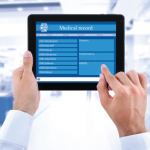This history level is headed in the direction of a level-four visit if the documentation for either the examination or medical decision making is strong enough. Remember, it also could drop down to a level-three visit if the documentation is not strong enough in the two other sections of the evaluation and management visit.
ad goes here:advert-1
ADVERTISEMENT
SCROLL TO CONTINUE
Getting to This Answer: The history of present illness has six elements:
- Modifying factors: The patient is on celecoxib, methotrexate, folic acid, and lansoprazole.
- Severity: The patient reports pain to be moderate.
- Location: The pain is in her wrists and finger joints.
- Timing: She reports generalized morning stiffness for one to three hours.
- Associated signs and symptoms: The patient fatigues easily.
- Duration: The patient has swelling and stiffness every day.
The review of systems has seven elements:
ad goes here:advert-2
ADVERTISEMENT
SCROLL TO CONTINUE
- Gastrointestinal: The patient denies dyspepsia or abdominal complaints.
- Hematologic/Immunologic: She denies fever, Raynaud’s phenomenon, and hematochezia.
- Cardiovascular: The patient denies chest pain.
- Respiratory: She denies dyspnea and cough.
- Ears, nose, mouth, and throat: The patient denies oral ulcers.
- Integumentary: The patient denies rashes.
- Psychological: She denies insomnia and depression.
Her family and social history has two elements:
- Past medical history: The patient has a history of GERD.
- Social history: She is married with two children.
This encounter is an established-patient outpatient visit. This history level is detailed:
- The history of present illness is extended because there were six elements.
- The review of systems was extended because there were seven elements.
- The past family and social history was extended because there were two elements.

